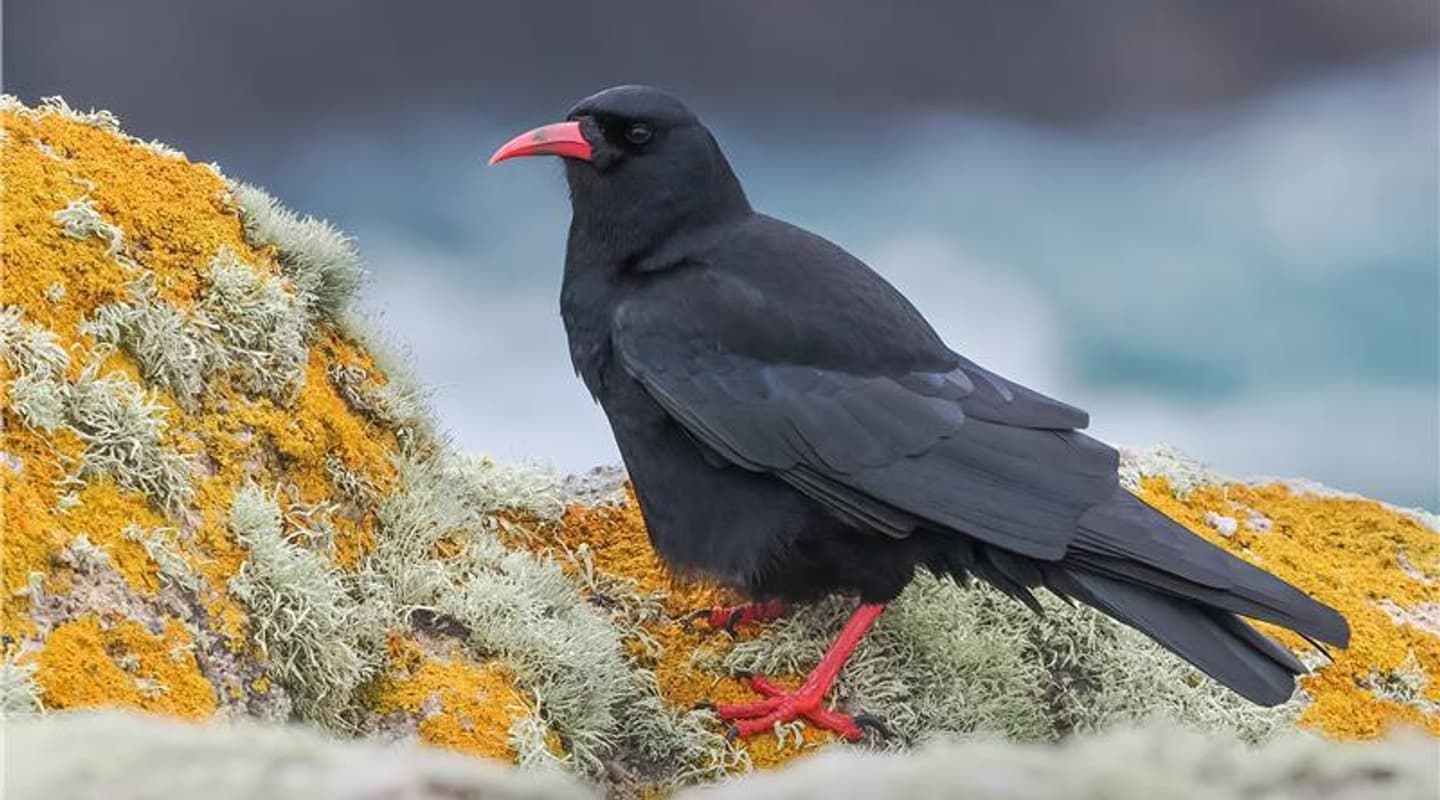
Written by Robyn Pound-Woods
For much of the 20th century, the Cornish chough had vanished from the county’s cliffs, with the last native bird seen in 1973. Once a common sight, these striking members of the crow family, recognisable by their distinctive red beaks and legs, were lost to habitat decline and hunting. Their disappearance marked the end of an era and left Cornwall without its symbolic ‘fire crow.’
However, in 2001, something remarkable happened. After nearly three decades of absence, wild choughs returned to Cornwall naturally, with a small group spotted on the Lizard Peninsula. Their recolonisation was aided by habitat restoration and conservation efforts, and in 2002, the first successful breeding pair in Cornwall for over 50 years hatched chicks, marking the beginning of their slow but determined comeback.
For Emma Stratton, this resurgence is deeply personal. "When I was six years old, my father took me on an adventure I’ve never forgotten. We went to the windswept cliffs above Mawgan Porth to catch a glimpse of the very last native Cornish chough.
That lone bird, with its striking red beak and legs, had once been common across these shores. But by then, it was the last of its kind in Cornwall. Its mate had died the year before, and there it remained — solitary, proud, and beautiful, a symbol of a species that had slipped from our cliffs and memories.
Choughs, members of the crow family, mate for life. That fact has always stuck with me. I remember my father standing beside me, as we watched that bird wheel through the sky, calling out into the wind." Emma Stratton, CEO, Scarlet Hotel
Recently, as people gathered on the cliffs to scan the horizon for passing whales, her attention was drawn to a different sight, flashes of crimson against the rugged coastline. It was a group of choughs, their high-pitched ‘chee-ow’ calls carrying on the wind. No longer a lone relic of the past, but several birds, wheeling and diving in the air, thriving in the very place they had once disappeared from.
"The continued expansion of choughs in Cornwall following their recolonisation back in 2001 is a powerful reminder of what’s possible when we give nature a helping hand. Their comeback shows that when we all work together to enhance and restore habitats, we can bring wildlife back." – Cheryl Marriott, Director of Nature and People, Cornwall Wildlife Trust
For those who remember when the Cornish chough was just a memory, its return is more than a conservation success, it is a symbol of resilience and renewal. Once silent, its voice has returned to the Cornish landscape, bringing with it hope for the future of our wild spaces.
Photography Credit: William Hall, Cornwall Wildlife Trust

